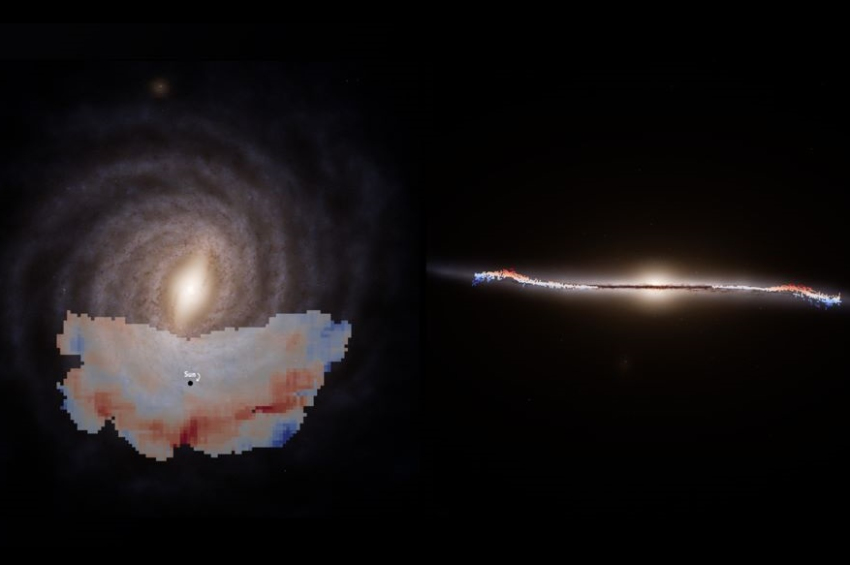Gaia reveals a giant “wave” rippling through the Milky Way
A team of astronomers using ESA’s Gaia space telescope has uncovered an astonishing large-scale ripple in our Milky Way — a “great wave” of stars sweeping outward from the galaxy’s center.
The Milky Way is not a static structure. For more than a century, astronomers have known that its stars orbit the galactic center, and since the mid-20th century it has been known that the Milky Way’s disk is warped. More recently, Gaia data revealed that this warped disk also “wobbles” over time — somewhat like a spinning top, the European Space Agency announced in a statement.
More to read:
James Webb Telescope detects mysterious structures in the center of Milky Way
Now, the new work shows there is an even more dramatic distortion: a coherent wave pattern in the vertical motion of stars across a vast swathe of the galaxy.
Much like ripples radiating from a stone dropped in a pond, this galactic wave extends across tens of thousands of light-years.
Mapping the wave in 3D motion
By leveraging Gaia’s unmatched precision — measuring not only stellar positions but also velocities in three dimensions — astronomers have created maps that show this wave in both space and motion.
In the “face-on” view of the galaxy, red zones indicate stars located above the warped disk, while blue zones mark stars below it. A cross-section (edge-on) view also reveals that the wave’s vertical motions (arrows) are shifted relative to the vertical displacements (the red/blue colors), just as one would expect in a moving wave.
This displacement between where stars are and how they move is a key signature of wave behavior, say the researchers.
Tracing the wave
To detect this effect, the team focused on young giant stars and Cepheid variables — stellar types whose distances and motions can be measured accurately over large distances. Because these young stars likely inherited motion from the gas clouds in which they formed, they could retain memory of the wave.
The wave extends across a broad radial region from about 30,000 to 65,000 light-years from the galactic center (for context, the Milky Way’s diameter is around 100,000 light-years).
More to read:
Trump is literally killing Nancy Grace Roman Space Telescope in its infancy
The origin of this galactic shake remains a mystery. One plausible hypothesis is that the Milky Way underwent a past encounter or collision with a dwarf galaxy, whose gravitational influence could have triggered this wave motion.
Another possibility is a connection to smaller ripples nearer the Sun, such as the so-called Radcliffe Wave, though that structure is much more local (on the order of a few kiloparsecs) and may be of a different nature.
The astronomers anticipate that Gaia’s fourth data release, which will include even more precise positions and motions (including for variable stars like Cepheids), will help further refine these maps and the dynamics of the wave and better understand the features of our home galaxy.




![[video] Guess who’s hiding more than 8 kilometers below the ocean’s surface?](/news_img/2025/11/13/news0_mediu.jpg)
![[video] Putin rules from shadows: Investigation finds Russian leader rarely works in Moscow](/news_img/2025/11/11/news1_mediu.jpg)

